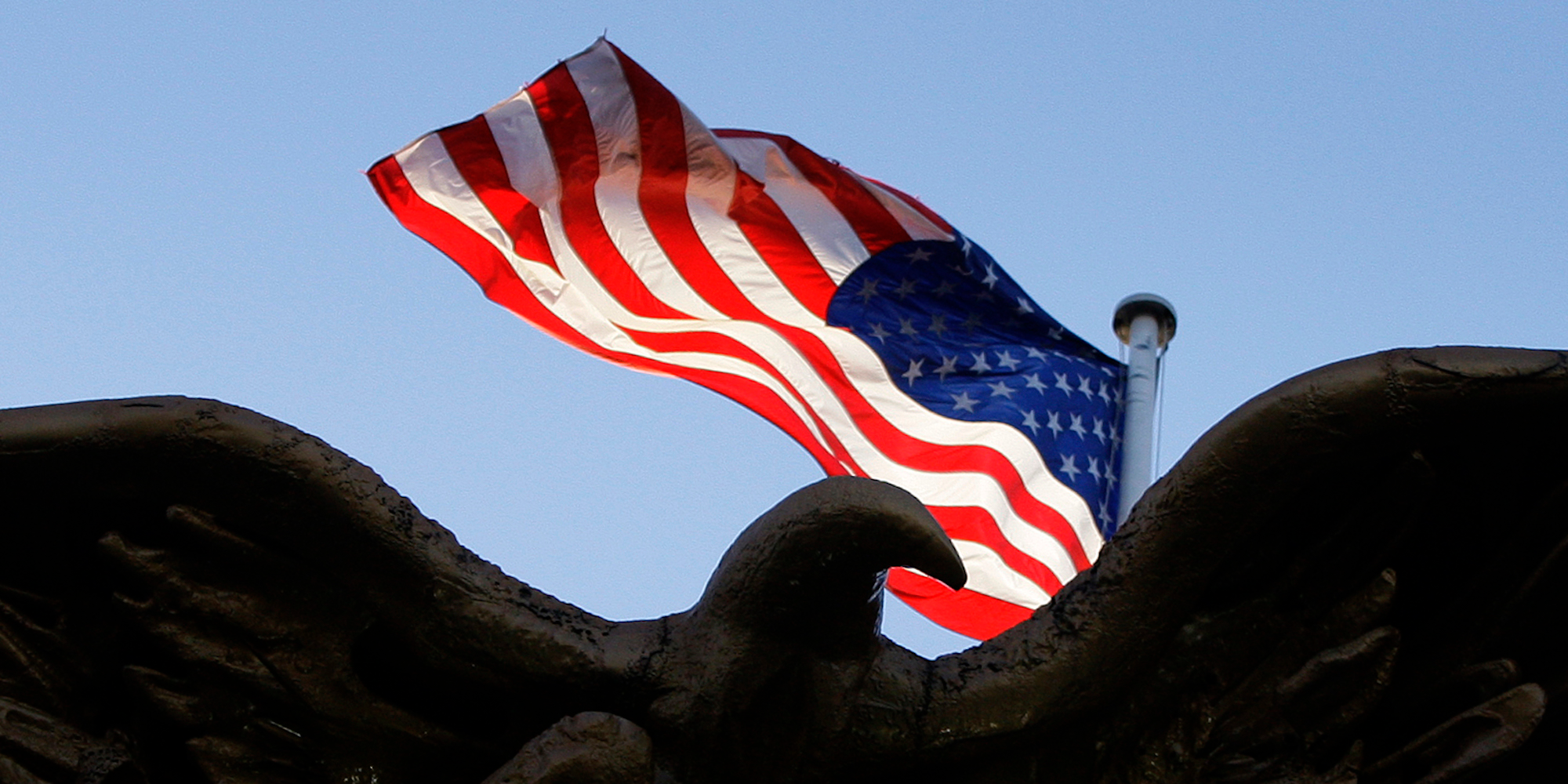- The Stars and Stripes was adopted by the Continental Congress as the US flag on June 14, 1777.
- It originally consisted of 13 stars and 13 stripes, representing the 13 original colonies.
- The flag went through changes, with more stars and stripes added as new states joined the Union.
- In 1818 Congress decided that the number of stripes should be fixed at 13, and only new stars added.
- The current US flag has been used the longest of any version, and has been the same since 1960.
- Visit Business Insider’s homepage for more stories.
On this day in 1777 Congress officially adopted the Stars and Stripes as the US flag.
Here’s what Congress said at the time: “Resolved, that the flag of the United States be thirteen stripes, alternate red and white; that the union be thirteen stars, white in a blue field, representing a new constellation.”
The flag was based on the Grand Union flag carried by the Continental Army in its fight against the British during the War of Independence, with its 13 stars and stripes representing the 13 original US Colonies.
Until then, colonies and militias had carried a number of different flags.
Who came up with the design of the flag is something of a mystery, with some historians believing it was designed by Francis Hopkinson, a New Jersey Congressman, and sewn by Philadelphia seamstress Betsy Ross.

Many know the flag as "Old Glory." This was the name given to a large 10-by-17-foot US flag by its owner, sea captain William Driver.
In the Civil War the flag survived many attempts by Confederate forces to seize and destroy it. Driver's name for that flag later became a nickname for all US flags.
The 'Star Spangled Banner' that inspired the national anthem flew over Fort McHenry in the 1812 war with the British.
Seeing the the giant 15-star, 15-stripe banner still standing after a fierce bombardment, Francis Scott Key penned his famous words and set them to music.

The flag went through changes over the years, with Congress passing declarations to add stars and stripes and change the design of the flag as new states joined the union.
In 1818 Congress passed a new resolution, stating that the flag should revert to 13 stripes, with only stars added for new states.

One hundred years after the official adoption of the Stars and Stripes, Congress marked National Flag Day, with the banner flown over public buildings across the nation.
It was President Harry Truman who in 1949 officially designated June 14 Flag Day -a day of national observance.

Today, the flag has 13 stripes, representing the original colonies, and 50 stars representing each state.
This version is the longest-serving US flag, having been officially adopted in 1960 to acknowledge Hawaii, the newest state.
The current flag was designed by Ohio high school student Robert G. Heft. His design beat thousands of others to be adopted as the official US flag.


